Joined: Aug 2017 Posts: 914 Threads: 18
Reputation:
13
Location: North Yorkshire
Great job, Mark, a real labour of love!
Look forward to seeing and hearing Slippery Anne before too long. We might even persuade you to take her to the IOM for the Manx Classic next year?
Joined: Aug 2017 Posts: 2,748 Threads: 31
Reputation:
95
Location: Auckland, NZ
For myself and others not familiar with the minutae of Seven history, to save us slogging through all previous posts, can a brief summary of the original car or a reference to info if on the Forum be provided please?
What do the cowls cover? Is the car arranged with parallel rear springs?
Joined: Aug 2017 Posts: 88 Threads: 14
Reputation:
2
Location: Fylde Coast
27-01-2019, 01:51 PM
(This post was last modified: 27-01-2019, 02:36 PM by Mark Atkinson.)
(25-01-2019, 10:31 PM)Lettington Wrote: Beautifully made Mark... Can you post a picture of the temperature gauge you are looking for? Could it be from a vintage aircraft?
Hi Nick and Damian,
As suggested by you both, please see pictures below, it is a Smiths automotive part, with a Nickel plated bezel of
2 & 7/8” overall diameter, the instrument body is 2 & 5/16” dia.
While the originals had silver/white faces, I could accept black and make my own to get it right. I have two Rev. counters, both of which are black, but I will eventually make a new face to match the one in the picture below.
Kind Regards, Mark
[attachment=5188]
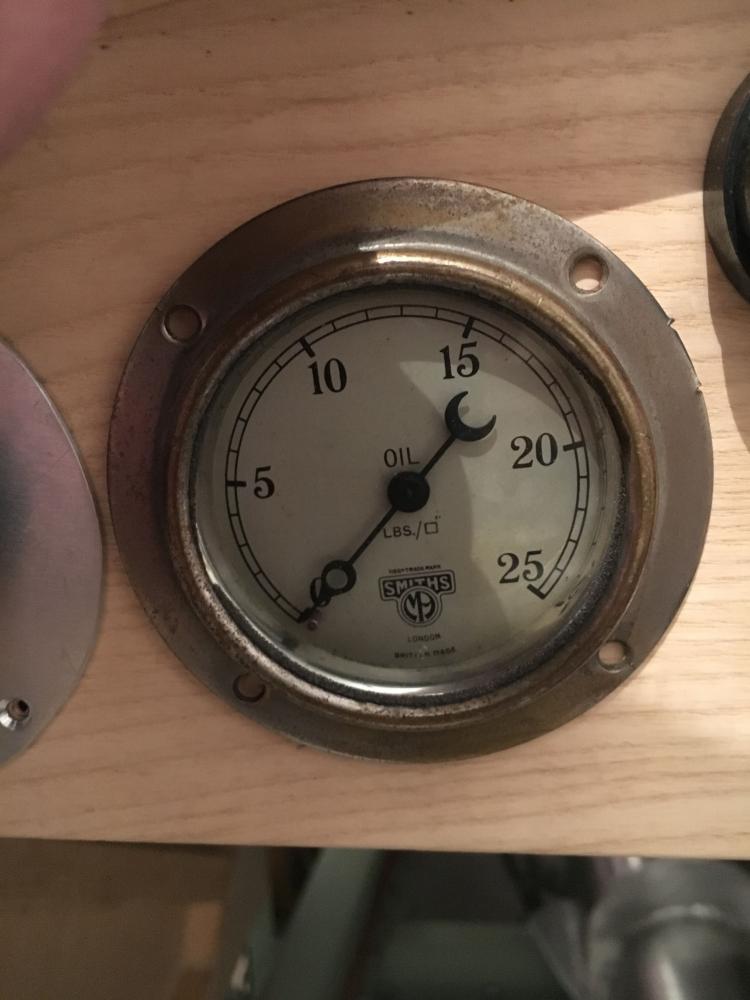
[attachment=5186]
I have just had a few problems attempting to reply, which has lost pictures and mixed up, my replies, so have forwarded my problems to administration, and will reply when things are sorted.
kind regards, Mark.
Joined: Aug 2017 Posts: 2,999 Threads: 167
Reputation:
37
Location: Sherwood Forest
Car type: 1938 Talbot Ten Airline
27-01-2019, 03:29 PM
(This post was last modified: 27-01-2019, 03:37 PM by Mike Costigan.)
I think Willie McKenzie does a 0-30psi version.
Edit: The original may be an Austin Twelve gauge - I cannot recall the pressure range, but pre-1928 Twelves had one just like that - may be worth contacting someone in the VAR?
Joined: Aug 2017 Posts: 119 Threads: 6
Reputation:
0
Location: Suffolk
Vintage Parts in Malvern do a range of instruments that size with brass or nickel bezels. Not sure if you're looking for pressure or temp.
https://www.vintagecarparts.co.uk/produc...ture-gauge
Suffolk, UK
1925 Chummy
1934 Box
Joined: Aug 2017 Posts: 88 Threads: 14
Reputation:
2
Location: Fylde Coast
07-02-2019, 07:22 PM
(This post was last modified: 07-02-2019, 07:38 PM by Mark Atkinson.)
(26-01-2019, 10:36 AM)Austin in the Shed Wrote: What ratio is you revcounter Hello Austin in the Shed,
I must apolagise for my very slow reply, but, I have had a few IT gremlins.
We need to drive the rev counter at 2:1 (input:output), the drive for which is taken from the Magneto drive shaft with an output gear located in the normal location of the vernier.
Interestingly, but, incorrectly, this pair of gears is often identified as the supercharger drive by people writing about the car, when in fact the supercharger drive is taken from timing gear.
A picture is worth a thousand words, so please see attached.
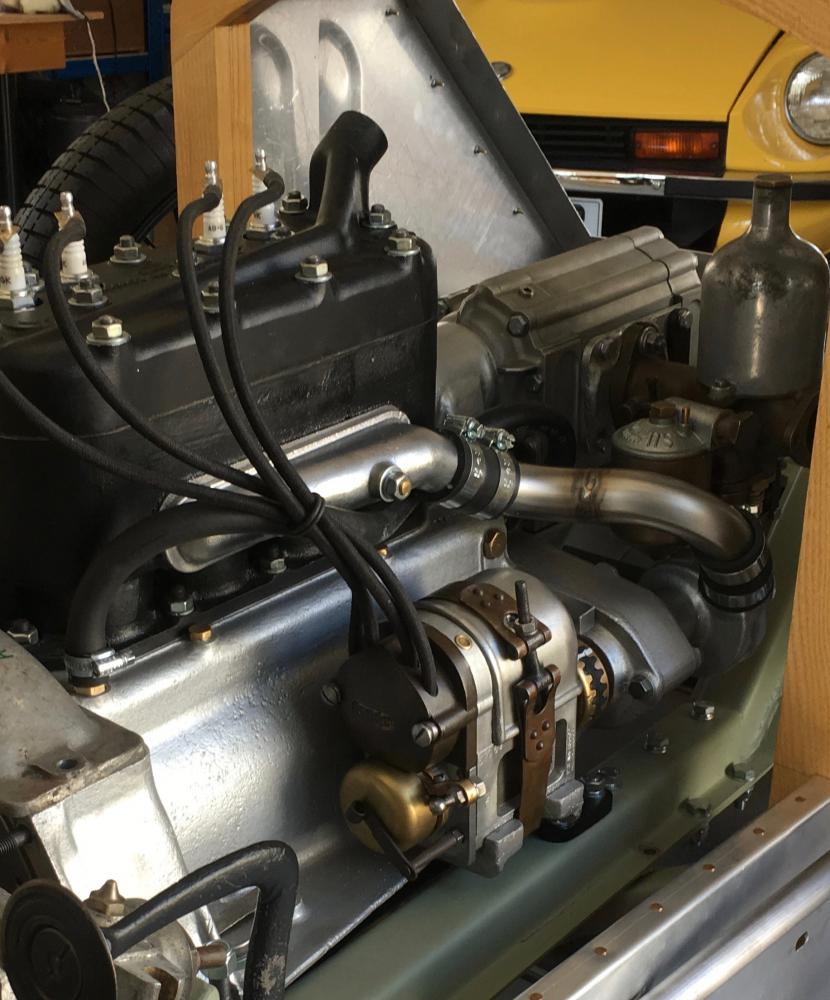
 engine2.jpeg
engine2.jpeg (Size: 46.02 KB / Downloads: 659)
As you will see in the period picture, the outer gear drives a right angled take off located forward of the mounting plate which takes the output up to the rev counter.
Kind regards, Mark.
(27-01-2019, 01:51 PM)Mark Atkinson Wrote: (25-01-2019, 10:31 PM)Lettington Wrote: Beautifully made Mark... Can you post a picture of the temperature gauge you are looking for? Could it be from a vintage aircraft?
Hi Nick and Damian,
As suggested by you both, please see pictures below, it is a Smiths automotive part, with a Nickel plated bezel of
2 & 7/8” overall diameter, the instrument body is 2 & 5/16” dia.
While the originals had silver/white faces, I could accept black and make my own to get it right. I have two Rev. counters, both of which are black, but I will eventually make a new face to match the one in the picture below.
Kind Regards, Mark
I have just had a few problems attempting to reply, which has lost pictures and mixed up, my replies, so have forwarded my problems to administration, and will reply when things are sorted.
kind regards, Mark.
Following on from my IT issues, which stopped me posting, please see attached picture of my slightly grotty new temperature gauge, which happily popped up on ebay yesterday, and I swiftly bought! It lacks a capilary tube, so will need restoring to functionality, but, after several years of searching it was fantastic to find one. Indeed, after looking for so long, I am not sure what I will look out for at auto jumbles now!
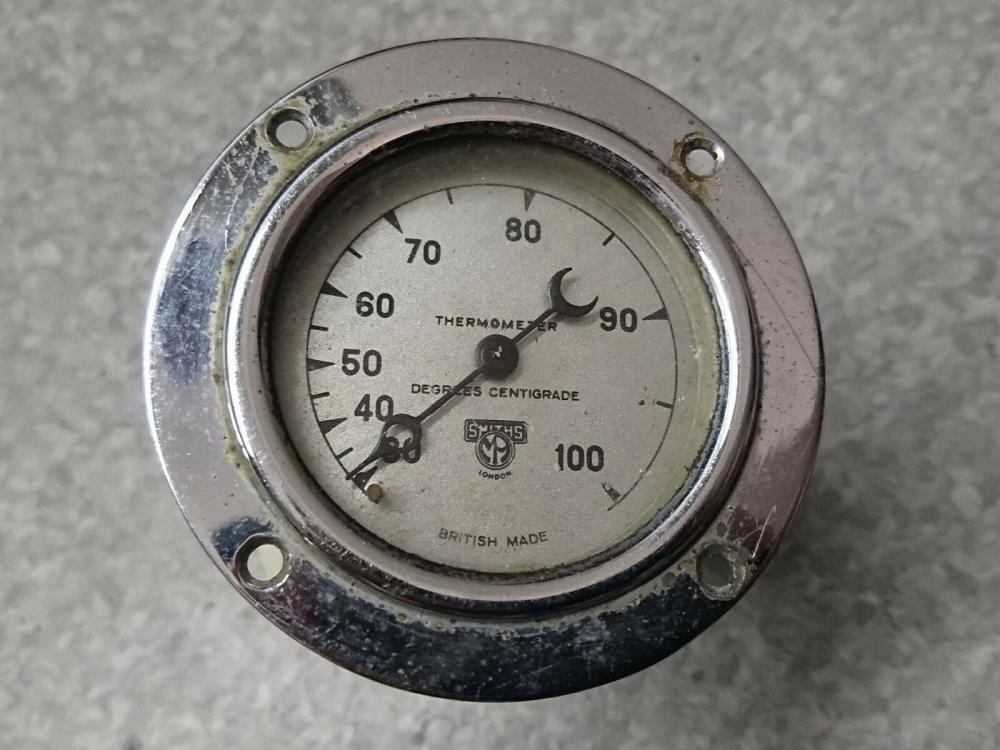
Thank you for all your suggestions and support.
Kind regards, Mark.
Joined: Jan 2018 Posts: 64 Threads: 7
Reputation:
1
(07-02-2019, 07:22 PM)Mark Atkinson Wrote: (26-01-2019, 10:36 AM)Austin in the Shed Wrote: What ratio is you revcounter Hello Austin in the Shed,
I must apolagise for my very slow reply, but, I have had a few IT gremlins.
We need to drive the rev counter at 2:1 (input:output), the drive for which is taken from the Magneto drive shaft with an output gear located in the normal location of the vernier.
Interestingly, but, incorrectly, this pair of gears is often identified as the supercharger drive by people writing about the car, when in fact the supercharger drive is taken from timing gear.
A picture is worth a thousand words, so please see attached.
As you will see in the period picture, the outer gear drives a right angled take off located forward of the mounting plate which takes the output up to the rev counter.
Kind regards, Mark.
(27-01-2019, 01:51 PM)Mark Atkinson Wrote: (25-01-2019, 10:31 PM)Lettington Wrote: Beautifully made Mark... Can you post a picture of the temperature gauge you are looking for? Could it be from a vintage aircraft?
Hi Nick and Damian,
As suggested by you both, please see pictures below, it is a Smiths automotive part, with a Nickel plated bezel of
2 & 7/8” overall diameter, the instrument body is 2 & 5/16” dia.
While the originals had silver/white faces, I could accept black and make my own to get it right. I have two Rev. counters, both of which are black, but I will eventually make a new face to match the one in the picture below.
Kind Regards, Mark
I have just had a few problems attempting to reply, which has lost pictures and mixed up, my replies, so have forwarded my problems to administration, and will reply when things are sorted.
kind regards, Mark.
Following on from my IT issues, which stopped me posting, please see attached picture of my slightly grotty new temperature gauge, which happily popped up on ebay yesterday, and I swiftly bought! It lacks a capilary tube, so will need restoring to functionality, but, after several years of searching it was fantastic to find one. Indeed, after looking for so long, I am not sure what I will look out for at auto jumbles now!
Thank you for all your suggestions and support.
Kind regards, Mark.
Well done - really good to see that you found the right bit.
Joined: Aug 2017 Posts: 555 Threads: 89
Reputation:
7
Location: Deepest darkest Kent
Outstanding work Mark.
With your new temperature gauge you should be able to strip the chrome off with reverse electrolysis to reveal the nickel underneath.
Joined: Aug 2017 Posts: 637 Threads: 29
Reputation:
7
Pretty big gears on the R/C drive Mark,About 3" dia ?.The drive,although not very clear doesn't look like any of the Smiths ones.
Joined: Aug 2017 Posts: 88 Threads: 14
Reputation:
2
Location: Fylde Coast
(27-01-2019, 05:48 AM)Bob Culver Wrote: [quote pid='22821' dateline='1548564489']
For myself and others not familiar with the Seven history, to save us slogging through all previous posts, can a brief summary of the original car or a reference to info if on the Forum be provided please?
What do the cowls cover? Is the car arranged with parallel rear springs?
[/quote]
Hello Bob,
Please excuse my very slow response to your request.
The car was built in late 1924 into early 1925, debuting to the press in April 25. The design intent was to build the first 100mph sub 1ltr car. The body shape is intended to be streamlined and the fairings are to do just that.
The car does have parellel rear springs, which are covered by some of the fairings. The driver sits down behind the rear cross member with feet straddling the steering, the large bullet covering the right hand side of his body.
From the outset it was a supercharged car, the first Seven to be encouraged in this way, using an 3 lobe Roots design built in house by Austin. Beatrice (Canning Brown) believed that the name Slippery Anne originated with Arthur Waite, but, it was not painted onto the car until it was privately owned by John Pares.
It did not achieve the magical 100 mph, which in my own humble opinion is due to the lack of any air flow management inside the car, it was simply open nose to tail without fire wall or baffles.
The chassis is considerably altered and gives a wheelbase which is the best part of a foot longer than a standard Chummy. Almost all the mass is within this wheel base and, unlike later Austin racers such as the Ulster, it has a very low G of G.
I hope this gives you a good picture of the car, but, probably far more use in understanding the configuration are some real pictures, the first at Madresfield in 1925:
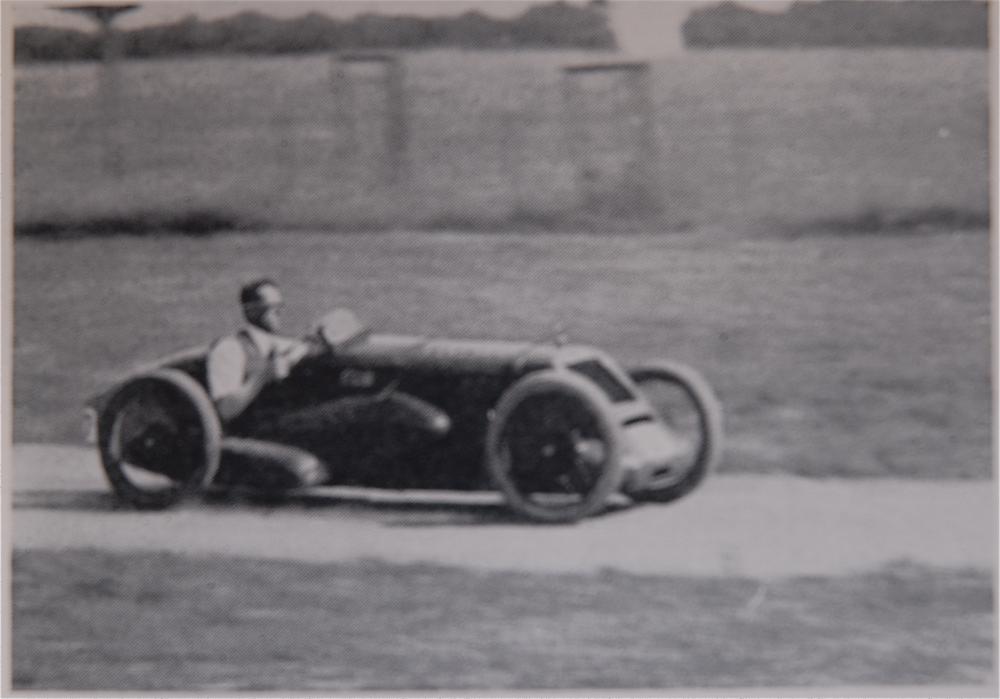
An overview of my chassis whist working out the seats
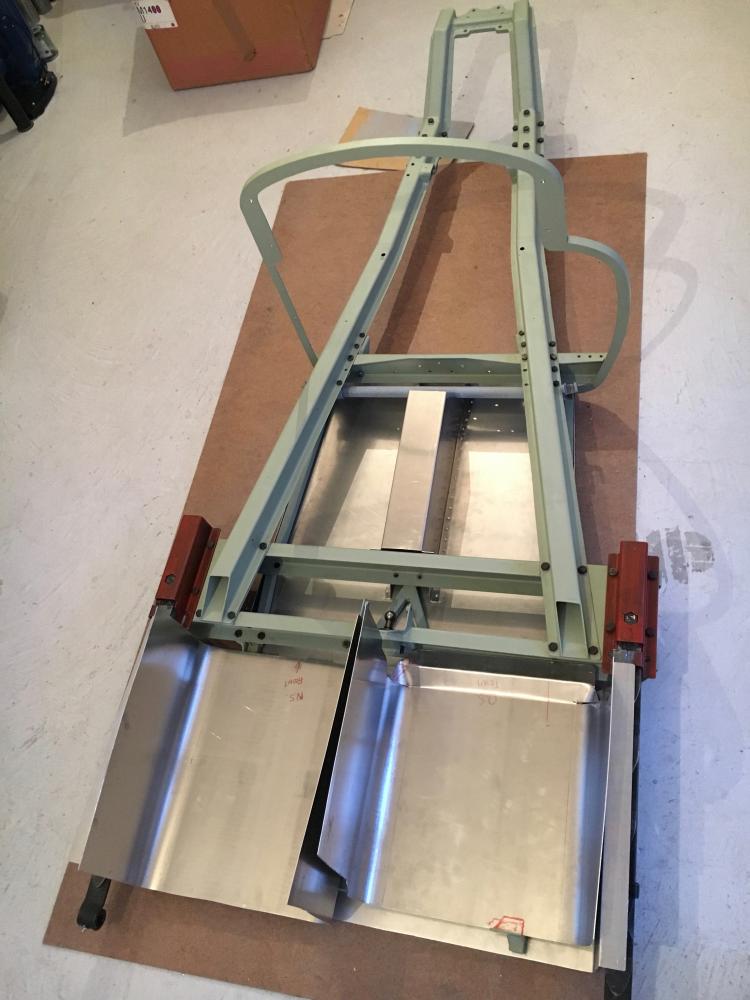
A clear perspective of the rear spring arrangment
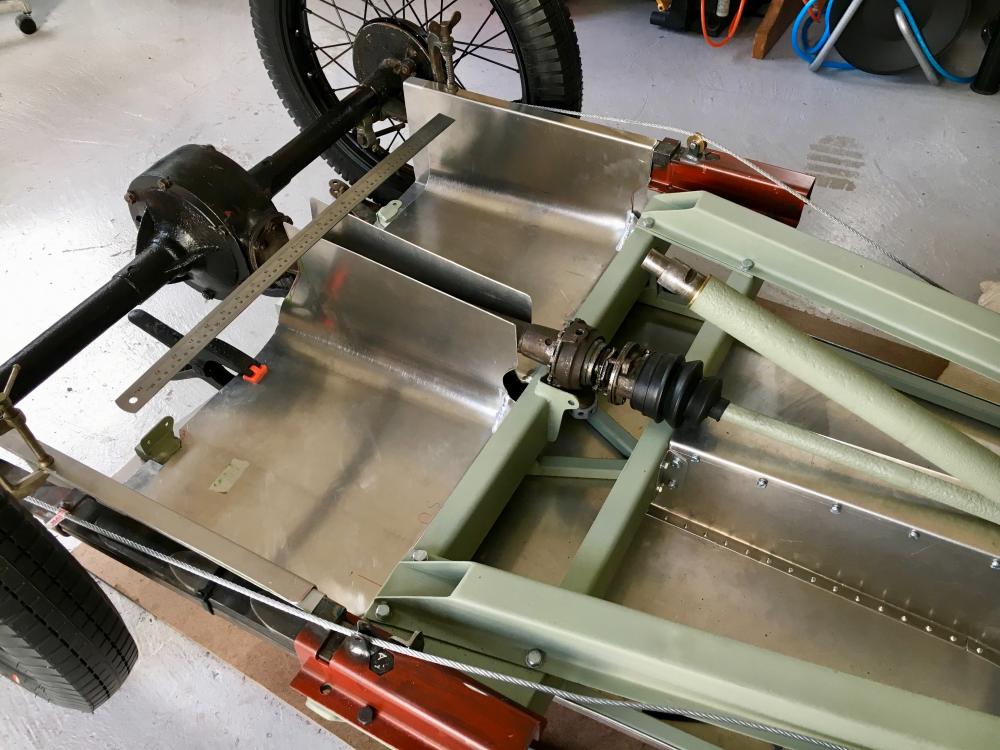
This picture shows how the drivers seat is positioned partially within the wooden frame with the right side sitting within the side fairing. Entry is via the passenger seat sliding across under the wheel, it is cosy but comfortable.
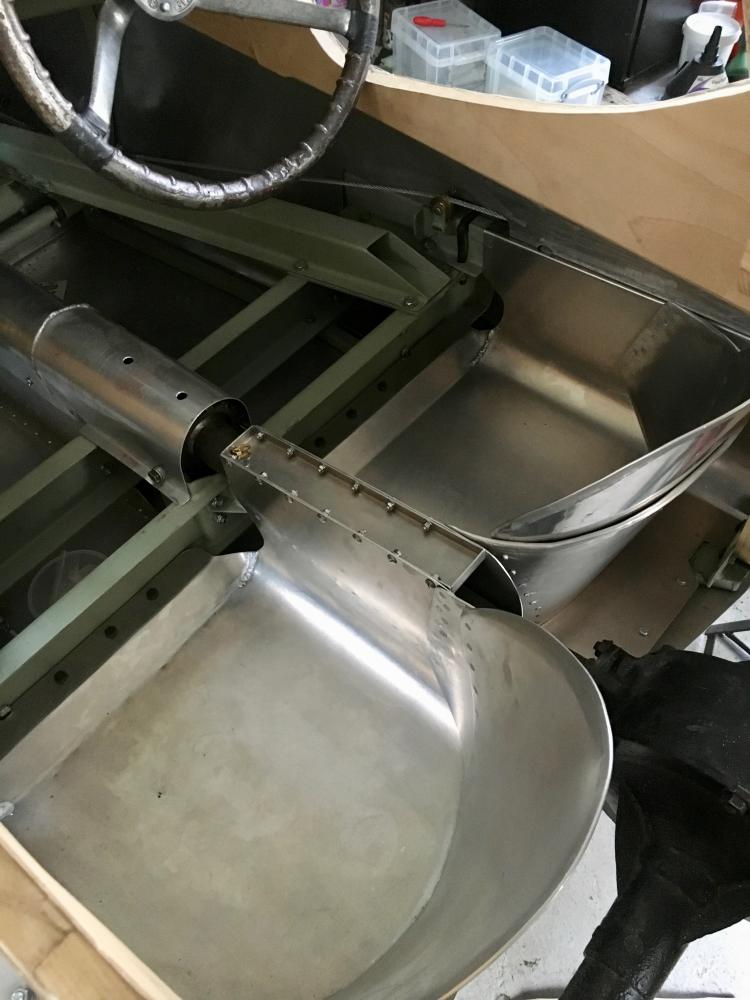
I hope this covers it, if you need more details, then please do say.
Kind regards, Mark.
|





